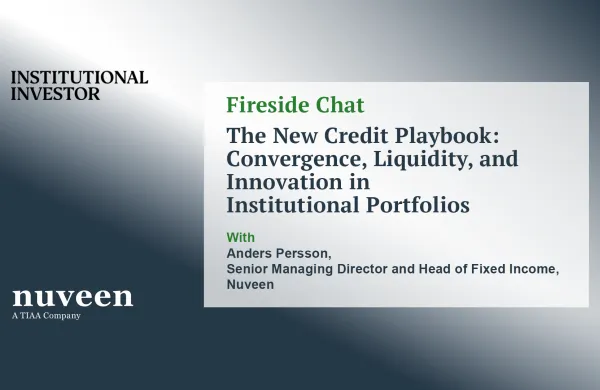Citigroup's acquisitionof Banacci creates a Mexican powerhouse and signals a new commitment to Latin America.
By Lucy Conger
July 2001
Institutional Investor Magazine
Citigroup's acquisitionof Banacci creates a Mexican powerhouse and signals a new commitment to Latin America.
Just a year ago Grupo Financiero Banamex-Accival, Mexico's biggest domestic financial group, mounted a hostile bid to acquire its archrival, Bancomer, and vowed to retain leadership of a market increasingly dominated by foreign banks. Banacci, as the group is known, lost out to Spain's Banco Bilbao Vizcaya Argentaria. But Banacci's chauvinistic impulse at the time makes it all the more surprising that the Mexican bank would itself sell out to a foreign bank.
Nevertheless, on May 17 Banacci agreed to be acquired by Citigroup for $12.5 billion, instantly boosting the U.S. bank's share of the Mexican market from 5 percent to 26 percent and creating a powerful competitor to market leader BBVA Bancomer. The deal signals the start of a new phase of intense competition and consolidation in Mexican banking , and attests to the financial system's fundamental recovery from the crisis triggered by the devastating 1994 peso devaluation.
Already, many other Mexican banks seem to be in play. Banorte has hired Goldman, Sachs & Co. for advice on strategic alternatives. Grupo Financiero Bital is seeking investors. The Bank of Novia Scotia, which controls Scotiabank Inverlat, is reviewing its options with a view to making an acquisition. And a Spanish bank, Banc Sabadell, is looking to boost its presence in Mexico by taking a 10 percent stake in a national bank, possibly Banorte or Bancrecer.
Consolidation will likely continue throughout Mexico's financial system. "It will go beyond banks to broader financial services, such as insurance and pension funds," predicts Paul Warme, head of Latin America research at ING Barings.
Banacci CEO Manuel Medina Mora, 50, will take charge of Citi's Mexican operation. "Banamex is doing well; it is very strong," he explains of the deal. "It is exactly at these moments that one has to take strategic decisions, when you are not in a position of weakness." Medina Mora says that Banamex decided that, of the options available, a North American combination made the most sense.
the Banamex purchase may be the biggest and boldest of Citigroup's acquisitions in the developing world, but it's unlikely to be the last. "We would like to get to about 8 percent market share in priority emerging markets and near 6 percent in all other emerging markets," declares Victor Menezes, head of Citigroup,s emerging-markets business. The bank currently operates in 80 developing nations and is looking to boost its market share in most of them.
In acquiring Banamex, Citi gains a bank with nearly $33 billion in assets and 8 million bank and pension fund accounts. Banamex holds 22 percent of all deposits in the Mexican financial system, 10 percent of mutual fund assets and 21 percent of pension fund assets.
Citi will aggressively pursue the management of Mexican pension funds, which now cover 18.8 million Mexican workers and claim more than $21 billion in assets. If Citi and Banamex merged their separate pension funds, they would become No. 1 in the market, with $5.4 billion in assets and 4.5 million participants, overtaking BBVA Bancomer, which boasts some $4.9 billion under management and nearly 3 million participants.
Banamex's strength in corporate banking should enable Citi to step up financing of cross-border trade, which exploded from $83 billion in 1994, when Nafta was adopted, to $215 billion in 2000. Banamex's other major lines of corporate-related business under Citi will consist of loans and other financial services for Mexican corporations, exporters and multinational companies operating in Mexico. Given Citigroup's "great force in corporate markets," Medina Mora says, the Citi name will be emphasized to business clients. But Banamex will preserve its own well-established brand for retail customers, and "Banamex, a member of Citigroup," will be the official title of the overall Mexican operation.
The acquisition will likely spark some management house-cleaning at Citibank's Mexican operation; the top management at Banamex will remain to run the enlarged operation. Citigroup expects the merger to cut annual costs by $200 million, but analysts are skeptical.
Banamex required a $5 billion capital infusion as part of the government's bailout of the banking system that followed the December 1994 peso collapse. It has sold off nonbanking assets to strengthen its capital position. (Most Mexican banks are now out of the woods in terms of capitalization, loan-loss provisions and general reserves, although the bank rescue will cost the public $100 billion.)
"In the past four years, bank performance improved because Banamex tightened cost control and benefited from the government program that helped banks restructure bad debts," says Jorge Kuri, Latin America financial institutions analyst at Morgan Stanley. Under the latest program, known as Punto Final, the government absorbed a large percentage of the losses from restructured loans.
In a sign of the significance of the deal , the largest-ever financial services transaction in an emerging market , Citigroup has expanded its board, headed by chairman Sanford Weill, to 20 to accommodate Banamex chairman Roberto Hernández and Alfredo Harp Helú, chairman of Banacci. In 1991 the two founders of Mexico's foremost brokerage, Accival, took over Banamex in a $5 billion deal, part of a general privatization of Mexican banks.
The pair, who paid a handsome premium for Banamex, brought a trading culture with them to the bank. This proved to be a problem on more than one occasion , in 1994, 1997 and 1998, aggressive trading caused considerable losses, although the bank recouped them in other years.
Along with Brazilian Alain Belda, chairman and CEO of Alcoa, Hernández and Harp Helú are the only non-Americans on Citi's board. In turn, Menezes, Citigroup executive committee chairman Robert Rubin and Citigroup vice chairman William Rhodes will join the boards of Banacci and Banamex.
A strong south-of-the-border identity should benefit Citi in wooing the 35 million Hispanics who live in the U.S. and whose annual purchasing power, Citi believes, reaches $400 billion or more. "The connection of Banamex and Citibank can provide a tremendous array of financial services with a hometown feel," says Menezes. To cater to this burgeoning market, Citi is creating a conjoined brand , Banamex-Citibank , and launching it from Banamex's U.S. subsidiary, California Commerce Bank.
Citi's takeover of Banamex casts into sharp relief the new contours of competition in Mexican banking. Large foreign institutions already dominate banking in Mexico, and when the Citi-Banacci deal, slated to close by year-end, is completed, more than three quarters of Mexico's banking system will be in foreign hands.
Banamex will be vying with BBVA Bancomer for the top spot in Mexican banking. Together they,ll command more than half of the banking market. "Whoever chooses to compete against these behemoths will have an uphill battle," says Stephen Dreskin, a Latin America bank analyst with Dresdner Kleinwort Wasserstein.
BBVA Bancomer remains the putative market leader for now, with 30 percent of deposits, 2,200 domestic branches and the largest market share in both mutual funds (25 percent) and pensions (23 percent). Banco Santander Central Hispano, operating in Mexico as Banco Santander Mexicano and Banca Serfin, places a distant third in market share, with 17 percent. The fourth-largest bank, Bital, claims a 14 percent market share, but it is short on capital and may soon forfeit its majority Mexican ownership to foreign interests. Banorte, No. 5, has just an 8.5 percent share. The remaining 8 percent of the banking market is divided among Scotiabank Inverlat, a few specialized corporate banks, several regionals and Bancrecer, an ailing, midsize institution that went on the block in early June and is expected to be sold by the end of the year.
For BBVA Bancomer, Citi's expansion in Mexico has a serendipitous upside. The acquisition "ratified that the financial crisis has ended," asserts David Sánchez-Tembleque, the bank's director of investor relations. "Citi's bet is very similar to that made by BBVA," says Sánchez-Tembleque. "They are seeing that the outlook for Mexican growth is good, the market in general is good because it's near the U.S., and things have been done well in the macroeconomy and politics." BBVA is seeing increased interest in its stock among international investors looking to make a play in Mexico's financial sector, he reports.
As for Citi's greatly enlarged presence on the banking scene, Sánchez-Tembleque sounds unconcerned. "Leadership will be more shared now," he concedes. But he insists that little fundamental has changed in the competitive landscape; the three leading banks, he predicts, will compete as they always have.
BBVA Bancomer's strategy, says Sánchez-Tembleque, will focus on three priorities: increasing efficiency through streamlining to achieve cost ratios comparable to those of its Spanish parent; building up credit operations, especially consumer credit, as well as asset management; and developing new businesses, such as wholesale banking for medium-size Mexican corporations, electronic transfer services for Hispanics in the U.S. and, later, other financial products for stateside Latinos. BBVA Bancomer already provides Mexican and Central American immigrants in the U.S. with electronic transfers through its branches in southern California and Texas as well as 1,000 store outlets, and it intends to broaden its range of banking services for Hispanic customers. "We have to evaluate to what point the Mexican brand has value [in the U.S.]," says Sánchez-Tembleque.
Santander's Serfin boldly projects that its combined market share with Santander Mexicano will grow 3 percentage points, to 20 percent, over the next three years. Serfin, which does no wholesale banking in Mexico, aims to concentrate on serving small and medium-size businesses while growing its 2 million-strong retail client base by competing on interest rates, providing new Internet banking features and offering incentives for borrowers who pay off their mortgages in full.
Financially sound Banorte "is not for sale," says investor relations chief Jorge Colín, rejecting the widespread speculation, fueled by its retention of Goldman, that the bank will soon put itself on the block. Colín says the bank aims to scale up, partly by expanding its branch network and by diversifying services for its mostly middle- and upper-class customers. The bank's explicit goal is to grow from 450 to 800 domestic branches over the next three years and continue to provide Banorte insurance, annuities and pension funds, which are managed by the staff of Italian company Assicurazioni Generali, a strategic partner. Another possible avenue to growth: acquiring Bancrecer. Banorte will put in a bid for the bank.
Though competition promises to be lively, the Mexican market remains grossly underbanked. Fewer than one in four Mexicans has a bank account. "There is still a lot of room to grow before these banks have to take customers away from each other," points out Morgan Stanley's Kuri. Most analysts foresee plenty of opportunity for the big banks.
Citi's purchase of Banacci should actually benefit all the banks indirectly. For a start, the U.S. bank,s $12.5 billion vote of confidence confers a virtual investment-grade rating on Mexico, which received an upgrade to that status from Moody's Investors Service last year but is still awaiting Standard & Poor,s blessing. Moreover, Citi's stake in Mexico should encourage other American companies to head south, adding to foreign investment, increasing employment and bolstering the peso.
After Mexico, Citigroup's top priorities in Latin America are Brazil, where it would like to be bigger and thus better able to tap into the growing retail market, and Argentina, where it seeks to strengthen its presence in retail, corporate and private banking.
In other emerging markets, Citigroup completed the acquisition of Poland's Bank Handlowy w Warszawie for $1 billion in May, gaining scale in Eastern Europe,s leading banking market. It also recently bought the Fubon Group of financial services companies in Taiwan.
Yet Citi foresees its growth in developing nations as being two thirds organic and only one third through acquisitions, according to Menezes. Emerging markets in theory lend themselves to such growth because they are expanding rapidly in most cases and tend to be woefully underbanked.
Citibank staked a claim to emerging markets long before globalization became a household word. The bank put down roots in Asia in 1902 and has been doing business in Latin America for 75 years. But in Mexico Citibank now intends to break with its pattern of concentrating on the corporate and high-net-worth markets overseas and wade into the mass market of retail banking. "The growth of an emerging middle class is attracting us to that market," explains Menezes.
The demographics appear enticing. Emerging markets are projected to grow at an average rate of more than 5 percent annually in the decade 1995,,04 , twice the average rate of OECD countries. What's more, they boast the world's largest youth market, with 37 percent of the population under 16. Developing nations generate 25 percent of global GDP in nominal terms, contain 86 percent of the world's people and produce 21 percent of financial services revenues.
In 2000 Citigroup's activities spanning 80 emerging markets produced $11.3 billion in revenues and $2.7 billion in net income from 20 million clients and 6.5 million pension fund participants. Roughly one out of every five dollars of Citigroup's profits come from emerging markets, and the Banamex acquisition should boost that to one in four.
But emerging markets don,t always live up to their potential. When pressed about developing countries, such as Mexico, that have achieved only modest growth rates in recent years and failed to increase most workers, purchasing power, Menezes replies confidently, "I bet you that ten years from now you will see many more people in an organized middle class, wanting to buy refrigerators." Citibank will be pleased to make them loans.





